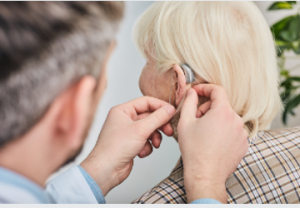If you are experiencing hearing loss, you can benefit from hearing aids. In most countries, hearing aids are considered medical devices, and regulations regulate their use. Listed below are the most common types of hearing aids. You can learn more about the pros and cons of each type by reading our comparison of different models. Choosing the right one for your needs will increase your quality of life. Choosing a hearing aid that suits you will improve your overall quality of life.
ITC
ITC hearing aids is designed to fit snugly in the ear canal and eliminate feedback. Their large surface area also minimises noise artifacts and feedback. Because they are custom-moulded to fit a person’s unique ear, they are less likely to become loose or work out when the wearer is talking or eating. Most ITC hearing aids have dual microphones, which ensure excellent audio clarity. Here are the pros and cons of ITC hearing aids.
 The size and shape of https://hcaudiology.net.au/ ITC hearing aids allow them to be discreet. They do not sit inside the ear canal. It makes them much easier to insert, and the casing also provides room for volume controls and memory settings. It makes them more comfortable to wear and is more durable than smaller versions. They are also slightly larger than traditional hearing aids, which is helpful for people with hairstyles or sideburns. As long as the earpiece does not stick out too far from the ear, users can wear these hearing aids without being noticed.
The size and shape of https://hcaudiology.net.au/ ITC hearing aids allow them to be discreet. They do not sit inside the ear canal. It makes them much easier to insert, and the casing also provides room for volume controls and memory settings. It makes them more comfortable to wear and is more durable than smaller versions. They are also slightly larger than traditional hearing aids, which is helpful for people with hairstyles or sideburns. As long as the earpiece does not stick out too far from the ear, users can wear these hearing aids without being noticed.
ITE
Unlike traditional in-canal hearing aids Adelaide, ITE hearing devices are custom-made to fit snugly into the outer ear. They are also easier to handle and clean because they have no external wires or tubing to deal with. These hearing devices also have more controls than traditional in-canal devices, including volume control and directional microphones. In addition, they fit naturally into the wearer’s ear and do not interfere with phone calls or other hearing aids.
Compared to BTE devices, https://hcaudiology.net.au/ ITE hearing aids require more cleaning than BTE devices. In addition, because they are worn closer to the ear, ITE hearing aids may experience more ear wax buildup and require more repair. However, proper maintenance can offset any need for repairs. ITE hearing aids can also be more easily disguised. They are made without external components and can be worn discreetly or invisibly.
BTE
BTE hearing aids are a common choice for people with severe hearing loss. These devices have multiple microphone ports that allow the device to focus on a specific location. They also have an amplifier that raises sound frequencies. It makes them perfect for people with varying levels of hearing loss. In addition, these devices are easily adjustable and suitable for most people. Reading this guide, you can learn more about BTE hearing aids and their benefits. Listed below are some of the benefits of BTE hearing aids.
Telecoil
The telecoil is a feature of some hearing aids. A loop system is a series of copper wires installed in specific locations. For example, a bank may have a small loop system beneath the counter, so you can activate your hearing aid when you see the signs. When you move into the range of the loop system, the automatic telecoil connects to the system. Telecoils are becoming increasingly popular with hearing aid users.
A telecoil works like a radio antenna. Radio stations transmit sound waves and create a circuit. Radio stations are only broadcast in your area, so a radio station with a telecoil in your hearing aid can pick up the signal. It makes the signal more clearly audible and the background noise less distracting. In this way, telecoil hearing aids improve your signal-to-noise ratio.
Bone anchored
Bone anchored hearing devices bypass the auditory canal and middle ear, providing users with a more natural sound experience. A bone-anchored device consists of a titanium implant, external abutment, and a sound processor. These components gradually fuse with the bones of the skull over months. As a result, bone-anchored devices effectively restore hearing to patients suffering from conductive, mixed, or unilateral hearing loss.